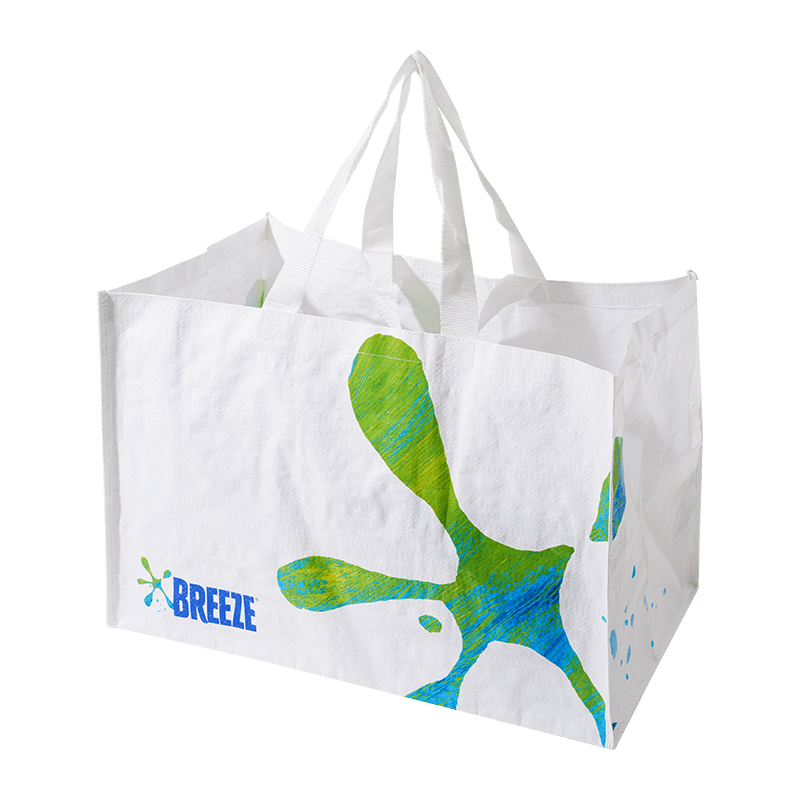The durability and lifespan of woven eco bags largely depend on their stitching techniques - a crucial but often overlooked aspect of sustainable bag production. As consumers increasingly choose woven reusable bags over disposable options, understanding these construction differences becomes vital for both buyers and retailers.

common stitch found in mass-produced woven eco bags uses:
- Single-needle lockstitch construction
- 8-10 stitches per inch density
- Polyester or nylon bonded threads
While economical, this method presents limitations:
- Moderate strength (15-20 lb load capacity)
- Prone to unraveling if thread breaks
- Minimal seam reinforcement
Budget-friendly woven reusable bags typically employ this method, offering about 6-12 months of regular use before seam failures appear. However, premium brands are moving beyond this basic approach in their woven shopper collections.
Double-Stitched Seams: The Middle Ground
Many mid-range woven eco bags now feature:
- Parallel rows of stitching (1/4" apart)
- Reinforced stress points
- Heavy-duty #69 thread
This approach improves:
- Tear resistance by 40% over single stitching
- Load capacity to 25-35 pounds
- Expected lifespan to 2-3 years
The double-stitch technique has become the gold standard for quality woven reusable bags, particularly those marketed as grocery woven shopper solutions.
High-end woven eco bags destined for commercial use incorporate:
- Three parallel stitch lines
- Bar-tacked corner reinforcements
- UV-resistant bonded threads
Performance benefits include:
- 50+ pound load capacity
- Resistance to seam slippage
- 5+ year projected durability
These woven reusable bags often carry premium price tags but prove cost-effective through extended use cycles. European-made woven shopper products particularly favor this construction method.
Specialty Stitches for Specific Applications
Innovative manufacturers are developing targeted solutions:
1. Chainstitch Hemming - Creates flexible folded edges on lightweight woven eco bags
2. Safety Stitch - Combines overlock and chainstitch for improve burst strength
3. Flat-Felled Seams - Eliminates raw edges on heavy-duty woven reusable bags
These techniques address common failure points in woven shopper designs while maintaining eco-friendly production standards.
Thread Technology Advancements
Modern woven eco bags benefit from:
- Recycled polyester threads (30% post-consumer waste)
- Marine-grade anti-mildew treatments
- Abrasion-resistant coatings
Such innovations help woven reusable bags withstand:
- Frequent washing cycles
- Moist environments
- Heavy loads without seam distortion
Consumer Implications: What to Look For
When evaluating woven shopper quality, check:
- Stitch density (more per inch indicates better quality)
- Thread thickness (heavier gauges last longer)
- Reinforcement at stress points (handles, corners)
- Consistency in stitch tension
Higher-quality woven eco bags will typically feature:
- At least 12 stitches per inch
- Visible bar-tacking at stress points
- Even, knot-free stitching throughout
Industry Trends in Sustainable Stitching
professional woven reusable bags manufacturers now prioritize:
1. Reduced thread waste through computerized patterning
2. Water-soluble thread lubricants
3. Solar-powered stitching equipment
4. Closed-loop thread recycling programs
These practices help maintain the environmental benefits of woven shopper products throughout their production lifecycle.
The Future of Bag Construction
Emerging technologies promise to revolutionize woven eco bags:
- Self-repairing stitches with thermoplastic polymers
- RFID-embedded threads for supply chain tracking
- Color-changing stitches indicating wear patterns
- Automated quality control via machine vision systems
As these innovations mature, consumers can expect even more durable woven reusable bags that maintain their eco-friendly credentials while offering extended service life.
Making Informed Purchasing Decisions
Understanding stitch differences helps buyers:
- Identify quality markers in woven shopper products
- Match bag construction to intended use
- Calculate true cost-per-use over time
- Support manufacturers employing sustainable practices
Whether choosing basic woven eco bags for occasional use or investing in commercial-grade woven reusable bags, stitch quality remains the invisible factor determining real-world performance.



 English
English Español
Español عربى
عربى







